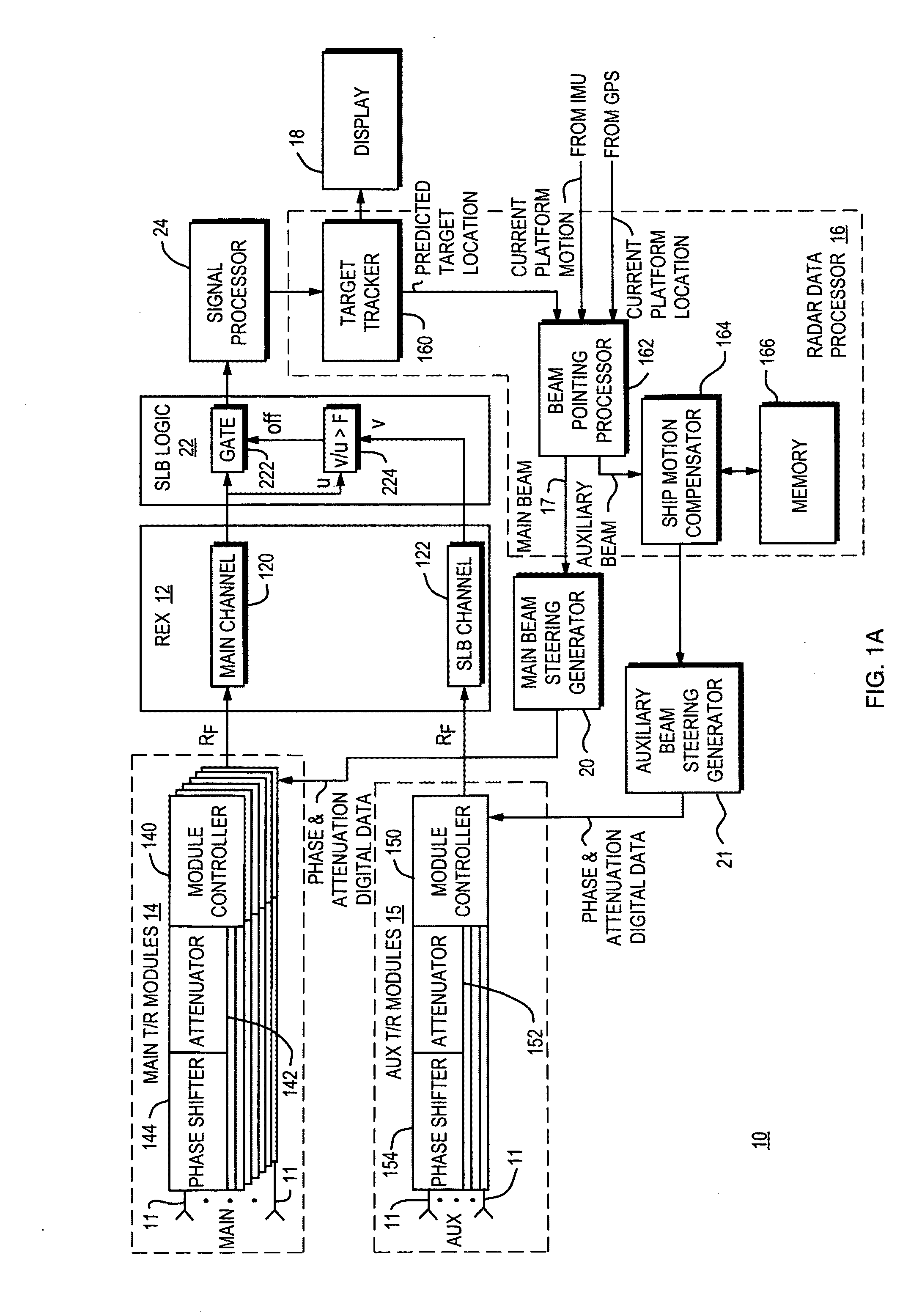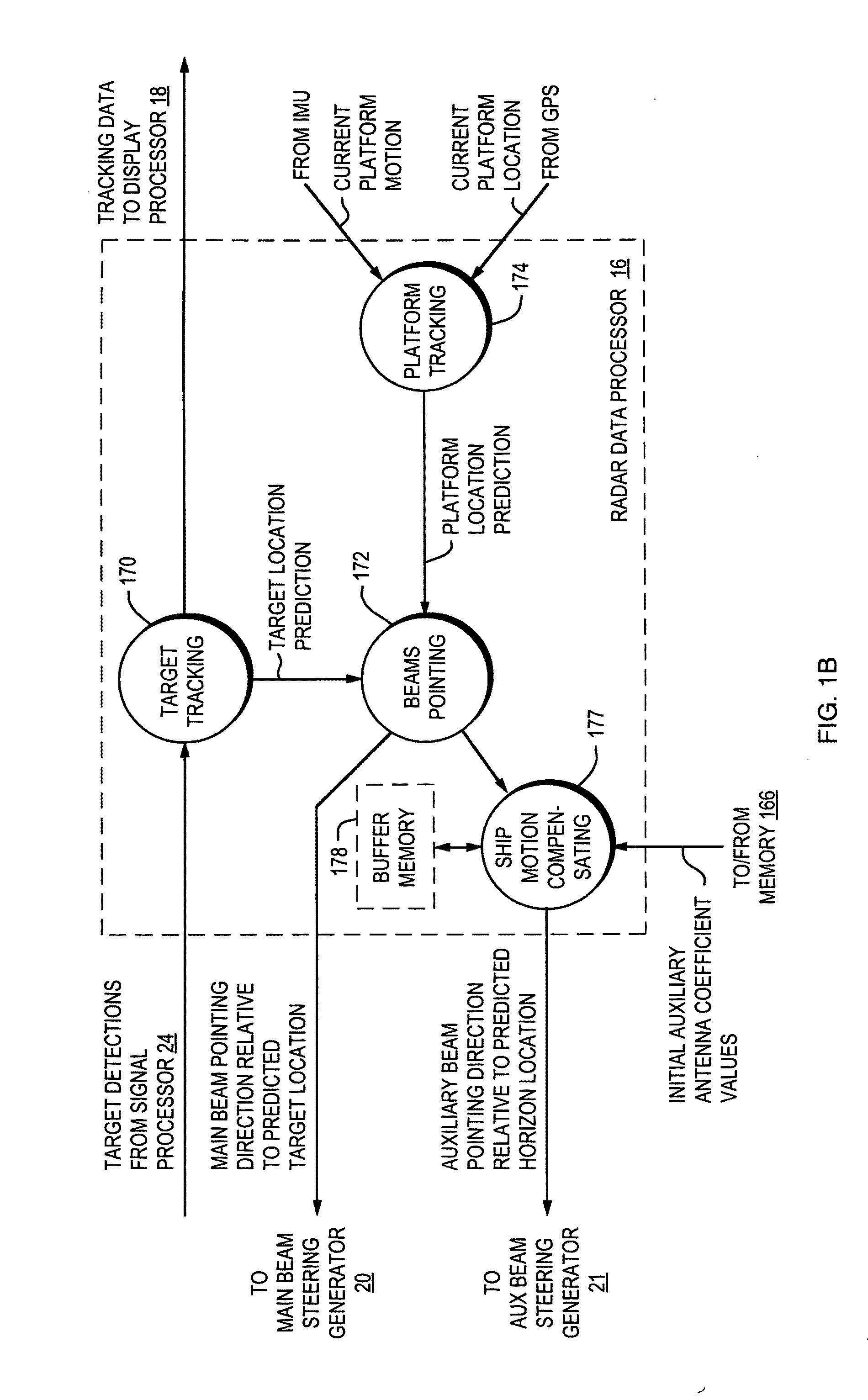Adaptive sidelobe blanking for motion compensation
a technology of motion compensation and sidelobe, which is applied in the direction of direction finders using radio waves, instruments, and reradiation, etc., can solve the problems of difficult mechanical approach, limited ability to rotate such antenna patterns, and small number of antenna elements for auxiliary antennas
- Summary
- Abstract
- Description
- Claims
- Application Information
AI Technical Summary
Benefits of technology
Problems solved by technology
Method used
Image
Examples
Embodiment Construction
[0029]Referring to FIG. 1A, there is shown an illustrative embodiment of the present invention which comprises a moving platform phased array radar system 10 incorporating the motion compensation method and system of the present invention. In the illustrated embodiment, the motion compensation system is utilized for carrying out effective sidelobe blanking for a shipboard moving platform based antenna system. Obviously, the motion compensation system may also be used for other types of moving platform antenna systems without departing from the teachings of the present invention. As shown in FIG. 1A, system 10 includes a plurality of conventional components that can be found in a phased array radar system. These components include a receiver / exciter (REX) component 12 that includes main and SLB auxiliary antenna channels 120 and 122 respectively which couple to a plurality of main and auxiliary transmit / receive (T / R) modules 14 and 15 respectively, a radar data processor 16 coupled t...
PUM
 Login to View More
Login to View More Abstract
Description
Claims
Application Information
 Login to View More
Login to View More - R&D
- Intellectual Property
- Life Sciences
- Materials
- Tech Scout
- Unparalleled Data Quality
- Higher Quality Content
- 60% Fewer Hallucinations
Browse by: Latest US Patents, China's latest patents, Technical Efficacy Thesaurus, Application Domain, Technology Topic, Popular Technical Reports.
© 2025 PatSnap. All rights reserved.Legal|Privacy policy|Modern Slavery Act Transparency Statement|Sitemap|About US| Contact US: help@patsnap.com



